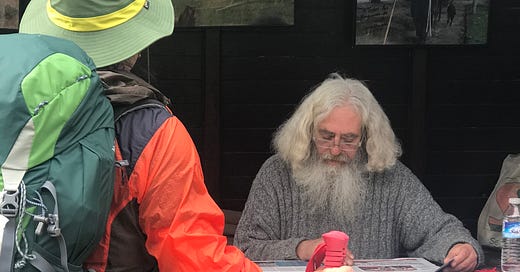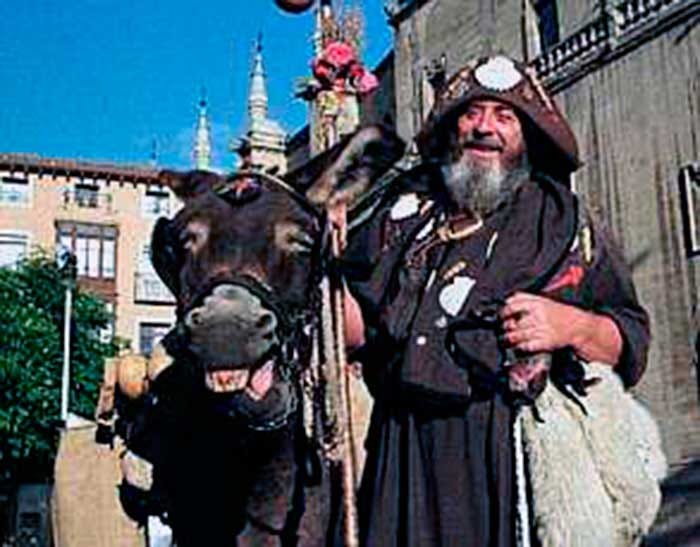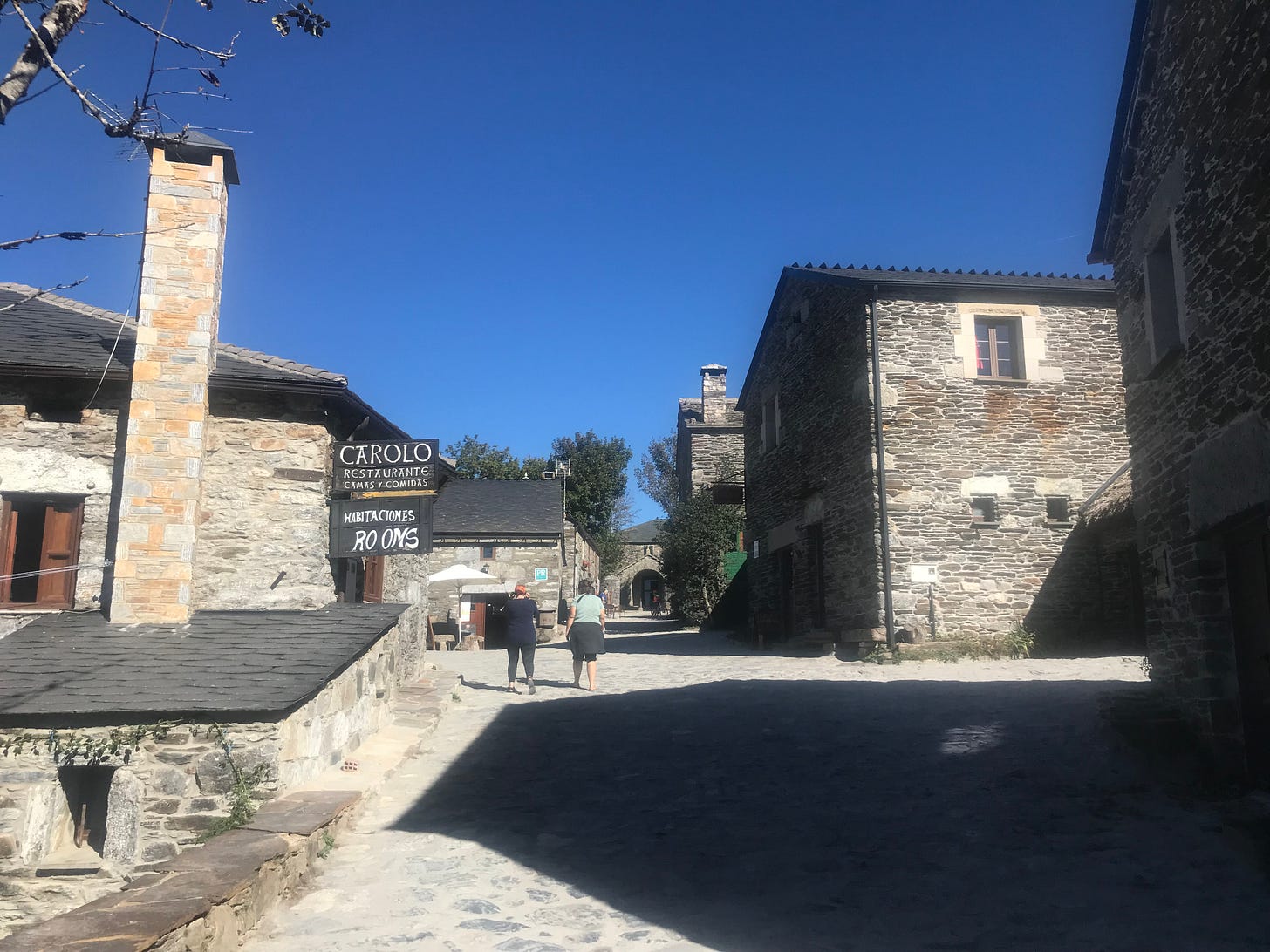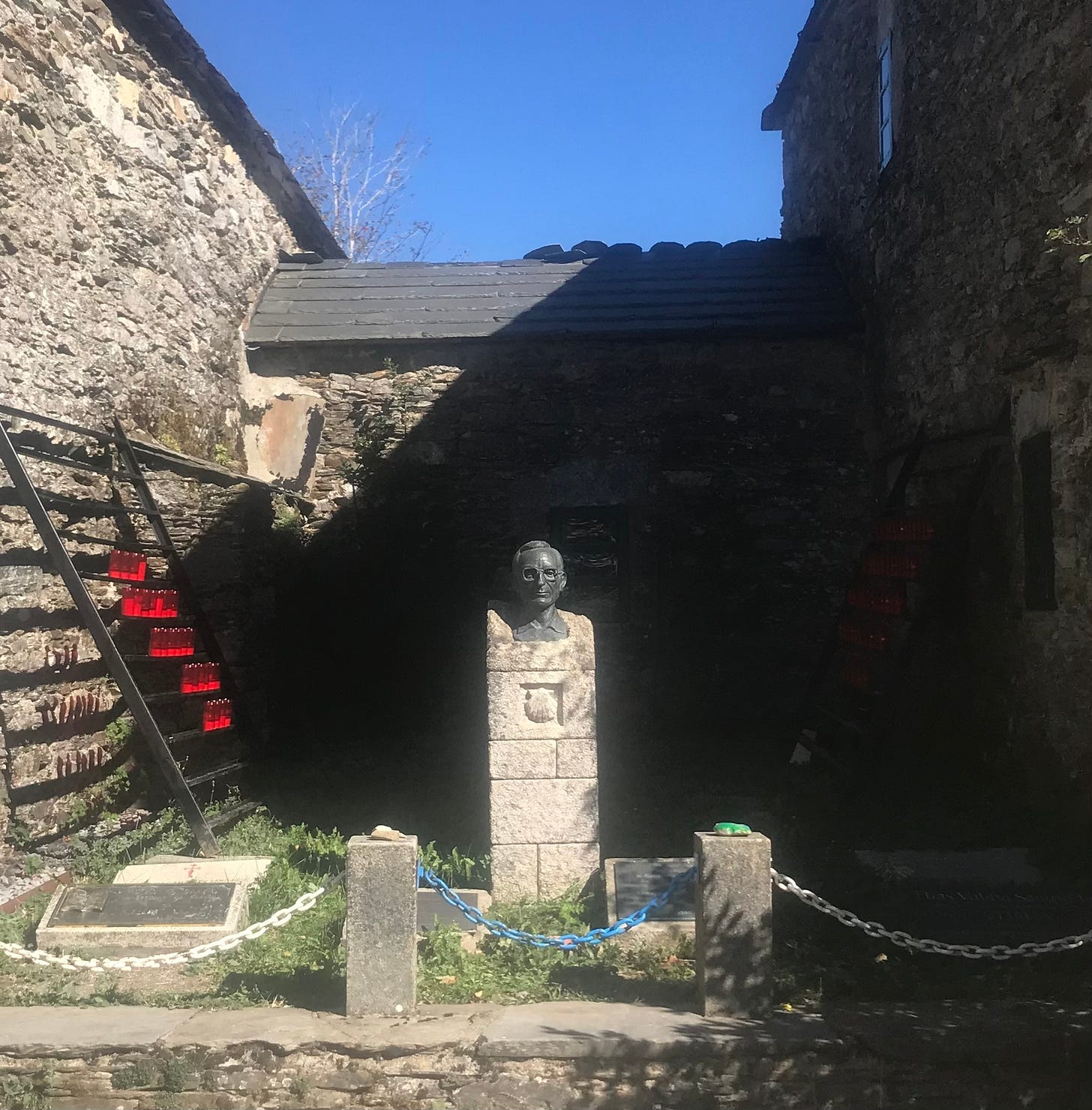Nowadays, almost everyone seems to know someone who has ‘done’ the Camino. This is not surprising. Last year more than 400,000 people completed some sort of pilgrimage. And pilgrims make all kinds of journeys; mostly they travel on foot, but some peddle bikes, and even a few rides on horseback! They make routes from over five hundred miles, long and hard, to seventy miles, short and not arduous. Whatever the path or method, they all arrive to the same place: the Cathedral at Santiago de Compostella. ‘The Way’ is now a full-fledged tourist attraction, with all the attendant benefits and liabilities.
I completed my first Camino just after Martin Sheen’s movie The Way came out in 2011. In that year, about 175,000 pilgrims made the journey.
Before Martin Sheen, Shirley McClain did the Camino in 1994. She wrote a book about her experiences, The Camino: A Journey of the Spirit. When she did her walk only about 20,000 people arrived at Santiago de Compostella.
Amazingly, it wasn’t long ago that almost no one walked the Camino. Enter this man…
He is a Spaniard named Marcelino Lobato Castrillo, but I call him ‘Gandalf of The Camino’. Nowadays, mostly you can find ‘Gandalf’ at his little stall, on the Camino, just outside Logroño. He sells odds and ends to pilgrims, poses for pictures, and tells stories to anyone who cares to listen. I spent the time to hear his story, and what a story it is!
How many ways of life are there? Countless, I suppose, but surely Marcelino’s path is one of the more interesting. In 1971, at age eighteen he announced to his parents that he was going to become a ‘pilgrim’. They were puzzled. “What’s the Camino”, they asked.
In spite of his parents’ skepticism, and years before the hordes descended on this glorious route, he set out for Santiago de Compostella. Fifty years ago, it was an odd, solidary journey. The paths pilgrims know today were untrodden; often he had to jump freeways to make his way. There were few hostels or algergues in which to stay, and definitely there were no taxi services to ferry one’s packs from one stop to another!
Step by step, he made it to Santiago…along with only thirteen other pilgrims that year!! Imagine thirteen, in comparison to the hundreds of thousands of pilgrims in the Middle Ages who every year made the hard, dangerous walk from all over Europe to Santiago. Even though, when Marcelino made his pilgrimage, the Camino was nearly dead, he loved it; and ever since ‘The Way’ has been his life’s vocation. With his donkey, and in traditional pilgrim garb, he has made countless pilgrimages (truly countless, as in too many to remember!).
In addition to his many walks along the Camino, Marcelino has been a tireless promoter of this great journey. Alongside Marcelino, there was someone else who deserves special mention in creating the modern Camino. He is the priest with a paint can. Like Kevin Costner in Field of Dreams, he believed that if you build it, they will come!
Enter Father Elías Valiña Sampedro, from the little village of O Cebreiro. O Cebreiro, though tiny, packs quite a powerful punch! After a very long, and in places, tortuously steep walk from Villafranca del Bierzo, you come to this first village in Galicia. Arriving here, you feel you are in another country… a Celtic Country. The gray stoned buildings and thatched round huts make one feel as if they are in Ireland.
And then there is the church…
The church of Santa Maria la Real is very old…in fact, it is the oldest church on the Camino, built in the year 836. The church houses an important relic from the miraculous appearance of Christ in the Eucharistic Cup in the year 1263…but that is a story for another day.
It was also the little church of Father Elías, who lived from 1929 to1989, and to whom there is a little shrine just outside of it.
Father Elías was a visionary, and a Camino ‘pioneer’. After years studying the Camino, he was convinced of the importance of this ancient trail and set himself the challenge of reviving the route, which had nearly become lost from its lack of use.
What were his tools to revive the route? A small Citroën car, and a few cans of yellow paint left over from a local road project. He was the priest with a paint can, and thus he set out to mark the path using the now iconic yellow arrows to indicate the right way at the various tricky crossroads along the trail.
In the 1980s, Father Elias was a curious site in his little car with his yellow paint. In one case, the Guardia Civil suspected him as a Basque terrorist! It was no bother to a priest on a mission, and he often said when asked about his work that he was “planning for an invasion.” Like Marcelino Lobato Castrillo, he also tirelessly promoted the creation of groups and associations to revive and maintain the different stretches of the Camino, but most importantly, we owe him the yellow arrows that help us find the way.
Over the last eleven years, I reckon that I have spent nearly one hundred days along various parts of the Camino, and I can attest to the power of the yellow arrows. They are a wonderful spiritual metaphor, and on occasion, they have provided the actual guidance needed to stay on, or rediscover the ‘right’ path. When lost, sighting the yellow arrow is an enormous relief!
Father Elias died in 1989. He didn’t get to see his vision for an ‘invasion’ fully realized, but, without ‘believers’ like Marcelino and Father Elias, there might not be a Camino at all today… And now, even though there are hundreds of thousands of pilgrims, one can still many solitary stretches along this amazing path. It is truly a special place! Later this summer you can come find me somewhere between Logroño and Leon with a loaded backpack, hiking on my annual pilgrimage.










I vote for horseback!!
Another charming whimsical entry from KD Conway detailing several offbeat histories of the Camino de Santiago by pilgrims who wanted to revive The Way! On a short walk into Santiago I witnessed the power of the yellow paint when one thinks the correct way is lost!